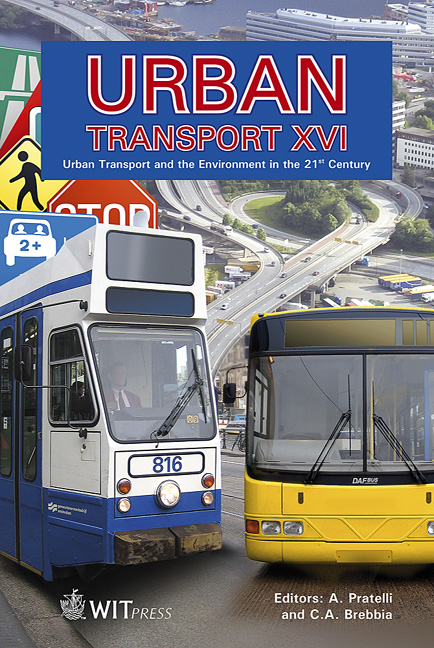Model Of Connecting An Airport By Rail – Case Study: The City Of Zagreb
Price
Free (open access)
Transaction
Volume
111
Pages
10
Page Range
229 - 238
Published
2010
Size
1,017 kb
Paper DOI
10.2495/UT100211
Copyright
WIT Press
Author(s)
T. Mihetec, M. Petrovic & M. Starcevic
Abstract
Zagreb Airport is a distance of 15km away from the City of Zagreb itself. It is connected with the City by road, which is congested during the morning and afternoon peak hours of commuting transport, thus significantly affecting the travel time to and from the airport. The airport development plan for the next 20 years includes the construction of another runway and a new passenger terminal of higher capacity for passenger handling and an adequate level of equipment. Regarding the planned increase in traffic at Zagreb Airport, it is necessary to expand the infrastructure capacities that connect the centre of Zagreb and Zagreb Airport, since already the existing capacities are insufficient. The current connection of the airport with the city is exclusively by road; more precisely, the main road that connects the city of Velika Gorica with Zagreb, and which is one of the busiest roads in the Republic of Croatia, and already as such cannot meet Zagreb Airport’s requirements. Since the railway line that connects the cities of Zagreb and Velika Gorica passes within the vicinity of the airport, the plan is to connect Zagreb Airport to the existing railway infrastructure and to construct an underground stop under the passenger terminal. This paper does not focus on the infrastructural solutions, but rather on the operator model, i.e. a rail carrier that would provide adequate transport of passengers in relation to Zagreb–Zagreb Airport–Velika Gorica. The paper will analyze the current state regarding the number of passengers and the methods of arriving, i.e. leaving the airport. Regarding the expected number of passengers in the future and the construction of an underground railway stop, a railway carrier model will be provided. The model will encompass the dimensions of the mobile capacities, i.e. transport means, the rail carrier trip frequency (headways), and the introduction of an integrated transport document for the purpose of more comfortable travel. Keywords: railway, airport, mobile capacity, headway, model.
Keywords
railway, airport, mobile capacity, headway, model





